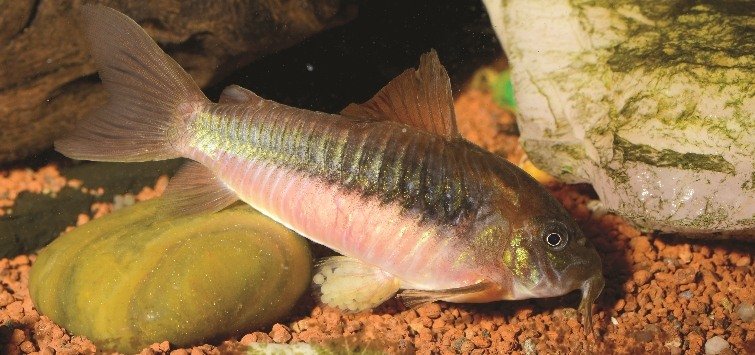
Let’s break it down. Breeding these charming little fish is a bit like planning a party. You need the right environment, some preparation, and a bit of planning to get everything to go smoothly. Once you understand their needs, you might find yourself with a tank full of cute little fry in no time. So grab your aquarium gear, and let’s dive into the world of corydoras catfish breeding!
Understanding Corydoras Catfish
Corydoras catfish, often simply called “corys,” are small, bottom-dwelling fish that’s well-loved by aquarium enthusiasts. There are about 170 species, but a few like the Corydoras aeneus and Corydoras panda are particularly popular for breeding. They typically grow to around 2 to 4 inches in length, making them a manageable size for home aquariums.
Here’s the thing: corys are social creatures. They thrive in groups of at least six, so you’ll want to keep a small school in your tank. This social structure helps them feel secure, which is essential for breeding. Think of it like a cozy little community where everyone supports each other—perfect for raising a family!
Another fun fact? Corys are known for their delightful behavior. Watching them interact, swim, and even play with each other is a joy. They’re peaceful fish that won’t typically bother other tank mates, making them ideal for community tanks.
Setting Up the Perfect Environment
Creating a breeding-friendly environment for your corydoras is crucial. It’s like setting the scene for a great party; you want everything to feel just right. Start with a spacious aquarium; at least 20 gallons is ideal for breeding. Make sure the tank is heated between 74°F and 78°F (around 23°C to 26°C).
Next, focus on the substrate. Corys love soft, sandy bottoms where they can dig and forage. Avoid sharp gravel, as it can hurt their delicate bodies. Adding hiding spots, like caves or plants, will give them security—a little privacy can really spark romance!
Water conditions matter too. Aim for a pH level between 6.0 and 7.5, and keep the water clean with a good filtration system. Regular water changes are also essential for a healthy environment. Remember, clean water means happy fish!
Choosing the Right Breeding Pair
Now that you have your tank ready, it’s time to select your breeding pair. You might be wondering, “How do I know which fish to choose?” Look for healthy, mature fish—about 6-12 months old. Make sure the male and female corys are visually different; female corys usually appear fuller in the belly compared to males, especially when they’re ready to spawn.
Here’s a tip: observe their behavior. Males often display courtship rituals, like swimming alongside the female and nudging her. This behavior is a good sign that they’re ready to mate. Pick a pair that shows this kind of interest in each other, and you’ll likely have a successful breeding experience.
Spawning Conditions
Creating the right conditions for spawning is essential. You can simulate a rainy season by adjusting some water parameters. Lower the temperature slightly and perform a partial water change with cooler, aged water to mimic rainfall. This change often triggers a spawning response in corydoras.
Corys typically lay eggs on flat surfaces, so adding spawn mats or broad-leaved plants helps. Anubias and Java ferns work great for this! Ensure there are enough surfaces for them to lay their eggs, as corydoras can lay anywhere from 20 to 150 eggs at once. That’s a lot of potential little fish!
Once spawning begins, the female will deposit eggs, and the males will fertilize them. After a few days, you’ll start to notice tiny eggs sticking to the surfaces. Keep an eye on these eggs, and remove any that look cloudy, as they may be infertile.
Caring for the fry
After about 3 to 5 days, the eggs will hatch, and you’ll have tiny fry swimming around! This is a super exciting moment—you’re officially a corydoras parent. The fry are very small and can be fragile, so it’s essential to provide them with the right care.
For starters, keep the water clean and stable. You can feed them infusoria or finely crushed flakes until they’re big enough to eat larger foods. It’s important to provide several small feedings throughout the day instead of one large one to ensure they’re getting enough nutrition.
Make sure to gradually introduce them to more substantial foods as they grow. As you get closer to the 2-3 week mark, you can start giving them baby brine shrimp. This will give them the necessary nutrients for healthy growth!
Common Challenges and How to Overcome Them
Breeding corydoras is typically straightforward, but you might face a few challenges along the way. One common issue is poor egg fertilization. If your pair isn’t successfully spawning, consider adjusting the water parameters again or ensuring the pair is healthy.
Another challenge could be keeping the fry alive. If they’re not thriving, double-check the water conditions, as any fluctuations can be harmful. Maintaining a steady environment is key.
Lastly, be prepared for overpopulation. If you’re successful in breeding, you might find yourself with more fry than you can handle. It’s great to spread the love, so consider finding homes for your extra fish or setting up a larger tank to accommodate them.
Breeding corydoras catfish at home can be an incredibly satisfying journey. From setting up the right environment to watching the adorable fry grow, every step is enjoyable. Remember, it’s all about patience and observation. Your corys will reward your efforts with their delightful antics, and soon enough, you’ll find yourself with a thriving little community.
So, whether you’re a seasoned aquarist or a newbie, grab your gear, follow these steps, and dive into the wonderful world of corydoras breeding. Happy fish-keeping!
